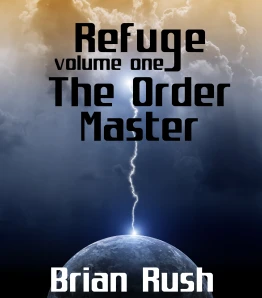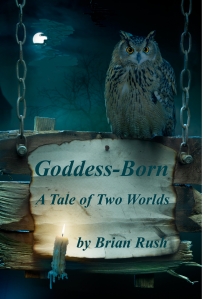Two religions, Christianity and Islam, have a particular focus on the life, supposed teachings, and significance of a preacher who (may have) lived in the Roman province of Judea during the early Roman Empire. Because both of those religions are based on myths that take the form of history, and that many of their followers believe to actually be history, the myths of Jesus get bound together with historical questions about his life and its effects, and it becomes difficult to extract the one from the other. For that reason, before plunging into a discussion of the myths of Jesus themselves, I’m going to take a paragraph to say something about the history of Jesus.
We don’t know for certain whether Jesus even existed. We don’t know how much of the Gospel accounts accurately describe his career. We know some things are inherently very unlikely (the miraculous darkness, earthquake, and tearing of the Temple veil when he died, for example) because there should be independent evidence of them if they happened, and there isn’t. Other things seem historically unlikely, such as the use of nails at his crucifixion, because that isn’t how it was usually done. (Crucifixion victims were normally roped to the cross, not nailed, as they lived and suffered longer that way.) Some of the miracles attributed to him seem plausible to me, knowing what I do of magic, while others seem ridiculously over the top (but of course I have no direct evidence against their occurrence, and my knowledge of magic is not absolute and infallible.) The historical Jesus is a big question mark. Most of the questions about him are simply unanswerable, including the question of whether there ever was such a person.
However, none of that matters for purposes of spirituality or religion, or anyway none of it should. Religion isn’t founded on history, but on myth. Jesus is an image of the divine impacting the world through a man. Connected with him are other images speaking of human potential, redemption, the universality of God, and the illusory nature of death. It is these images that matter, not any connection they may or may not have to history.
Having said that, I want now to explore the Christian and Muslim myths of Jesus (these are similar, but not identical) and then some cross-observations from the Gospels and from my own quirky understanding. For the remainder of this article, I’ll be speaking only of the myths of Jesus, and completely ignoring any historical questions for the irrelevance that they are.
The Christian Myths of Jesus
In Christian belief, the ancient Jewish prophecies of the Messiah to come foretold a time when God would be incarnate in human form, and would offer himself in sacrifice to himself to pay for humanity’s burden of sin. Jesus was the fulfillment of that prophecy. He was both God incarnate and the “son of God.” The latter, which seems to contradict the former at first glance, is resolved by a philosophical understanding of “the Son” as an aspect of the one God, as He is manifest in the world (where the Father is God in His transcendent aspect, and the Holy Spirit is God as He is manifest in the human heart). When he was crucified, the demand of the Law for blood sacrifice in atonement for sins was met and fulfilled for all time, rendering that demand null and void; he was both the working-out and the overcoming of the Fall of Man. When he rose from the dead, that was a sign that the power of death to destroy us is broken, and we are heirs to life eternal.
The Muslim Myths of Jesus
In Islam, as in Christianity, the Jewish prophecies of the Messiah foretold the coming of Jesus, but for Muslims the significance is different and a little less cosmic. The prophecies foretold a time when God would expand His covenant with the Children of Israel by entering into a new covenant with all of mankind. Jesus was God’s Messenger who brought the word of that new, expanded covenant. He brought the Word of God initially to the Jews, but the Jewish religious authorities rejected his message, as had been foretold, and by turning against God’s Messenger lost their special status as the chosen people of God. They arrested Jesus and condemned him to death, but God in His compassion and justice took the Prophet into Paradise and the traitor Apostle, Judas Iscariot, was crucified in his place. Thereafter, Jesus’ disciples spread his message and the truth of the One God throughout all the world, but in time that message became corrupted with false ideas and the influence of power-hungry institutions, requiring that God send the Prophet Muhammad with a correction.
The Gospel Accounts
The three synoptic gospels (Matthew, Mark, and Luke) present a picture of a very holy and powerful man, but they also present some problems for the standard Christian view of Jesus (although perhaps not insuperable ones). They might also present some difficulties for the Muslim myths of Jesus except that Muslims don’t have the same reverence for the Gospels that Christians do and simply consider the accounts flawed and only partly true.
To begin, the Gospels have many passages which point to limitations of Jesus’ power and knowledge. He is depicted as neither omniscient nor omnipotent. For example, in Mark Chapter Six, Jesus returns to his hometown, and finds that the people there, who know him, are reluctant to accept him as a prophet. “He could not do any miracles there, except lay his hands on a few sick people and heal them.” (6:5) The people’s lack of belief in him limited his power, which was much greater in other contexts. In Mark 8:22-25, Jesus’ first attempt to heal a blind man works imperfectly (“I see people; they look like trees walking around”), and he is required to make a second attempt, which works better. Another passage of this kind is Luke 8:40-48. In this passage, Jesus is walking in a crowd of people and a woman plagued with a vaginal hemorrhage touches him, and his power heals her. Jesus knows that power has gone out of him, but doesn’t know the particulars, and asks, “Who touched me?” His knowledge, like his power, is depicted as having limits.
There are also a number of passages in which Jesus expresses opinions which he then changes as a result of others’ arguments or persuasion. For example, in Mark 7:24-30, a Greek woman asks Jesus to “drive a demon” from her daughter. Jesus’ haughty reply is that he is come to the Children of Israel, and “it is not right to take the children’s bread and toss it to the dogs.” She replies that “even the dogs under the table eat the children’s scraps,” and Jesus changes his mind and heals her daughter.
There is also at least one passage in which Jesus implicitly denies being God. That is found in Mark 10:18 and Luke 18:19, where someone has referred to him as “good master” or “good teacher,” and Jesus responds, “Why do you call me good? No one is good — except God alone.”
On the surface, these passages might seem to uphold the Muslim myth of Jesus over the Christian one, in that Muslims see Jesus as a great and holy Prophet but not God incarnate. However, there are other passages in which Jesus seems to imply that God dwells within him, and also within others, and that is not in accord with Muslim beliefs.
Again, though, questions of who or what Jesus “really was” are not the point here. We can’t answer such questions. The point, rather, should be about the power of myth to prevail even over contradictions from what is supposedly holy writ. The Gospels (particularly the synoptic Gospels) were composed a long time before the Imperial Church was formed in 325, or the Nicene Creed articulated. The most logical interpretation of these passages is simply that their authors had a different idea of Jesus than the Church later taught. They did not try to depict him as God incarnate because the idea simply hadn’t occurred to them. Yet this idea is central to the practice of Christian religion, which involves the worship of Jesus as an image of God. And so, passages in the Gospels which are troubling for the idea are simply glossed over and ignored.
Jesus as an Image of God
Devotion to Jesus as God incarnate is similar to the Hindu practice of Bakhti Yoga, in which some image of God (perhaps a mythical God such as Vishnu or Shiva, but often an Avatar of Vishnu, which bears even greater resemblance to the Christian practice) is the focus of love and prayer. This brings the devotee closer to the divine. It creates an association, and so a magical link, between the devotee and a large part of the cosmos, ultimately the cosmos as a whole, seen through a mythic lens.
The important thing here is not Jesus’ divinity but that of his worshipers. Through love and devotion to Jesus as an image of God, the Christian worshiper makes a connection with his or her own inner divinity, and allows that divinity to manifest in his or her life and heart.
This is a powerful method of spiritual magic. There is nothing wrong with it as far as it goes. The potential problem arises when the devotion to Jesus as an image of God gives rise to a factual belief that Jesus was God in any historical sense — the usual claims of standard Christian theology. When that belief is self-focused, it acts benignly, opening the worshiper’s heart to the divine and facilitating the raising of consciousness. When it becomes other-focused, however, it turns diabolical, giving rise to claims that non-Christians are worshiping false gods, and, when conjoined with political power, to witch-hunts, inquisitions, and crusades.
Can Christianity in some form survive to form a part of the spirituality of the advanced civilization we are evolving into? If so, it will be through recognizing the value of myth, and the fact that myth is precisely what Jesus is. As myth, he is a part of our spiritual heritage and should be a treasured part. The problems only arise when the myth is falsely — and irrelevantly — asserted to be history.







